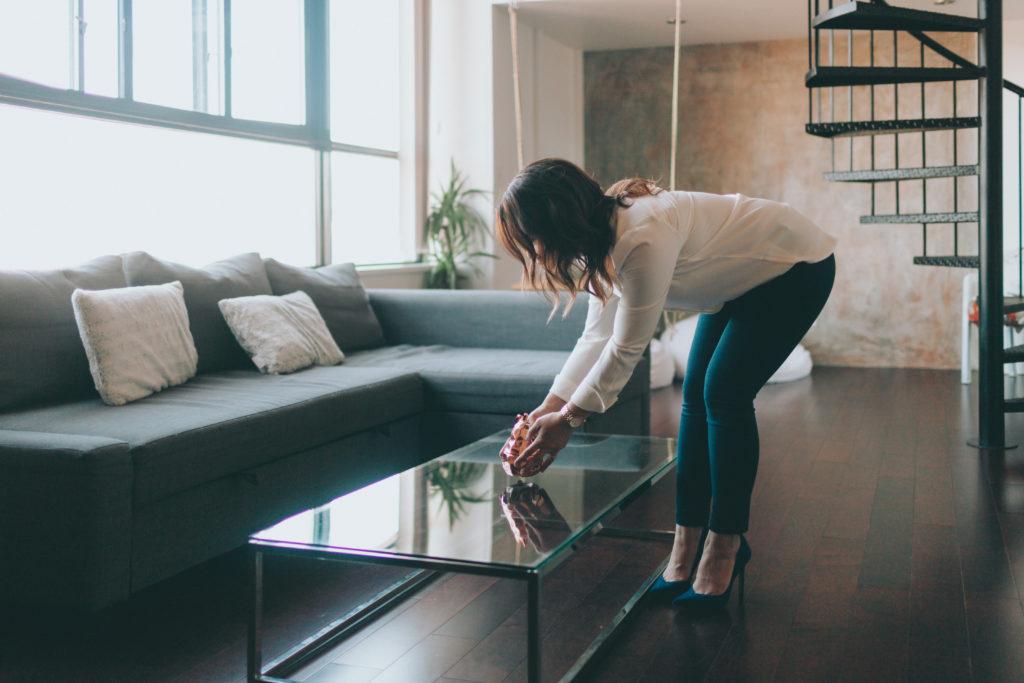Successful apartment model staging flatters the space without being obvious. Some may see an empty unit as a blank canvas, but in today’s world where virtual tours are commonplace, staging is a must. When a potential resident walks into a staged apartment model whether it be in person or via a virtual tour, they can easily see how large a bed comfortably fits in the bedrooms, get an understanding of where a TV may go in the living room, and see how large the dining space truly is. All of these assurances and details help speed up the leasing process and leave residents feeling more confident in their new home. Most people can’t envision a space as they would design it, so it’s best to show an apartment with furniture in it to take out the guesswork.
Here at P.B. Bell, our leasing teams are master stagers and have five tips for apartment model staging you can use in your next vacant apartment.
1. Who are the potential Residents?
Understanding the wants and needs of potential residents will outline what to prioritize in the staging process. Depending on their age and lifestyle, renters may find different elements of the space important. For instance, a young professional who recently graduated college may be most interested in apartments that have a space for entertaining; while an expecting couple may be concerned with where to put a nursery and the safety elements of the space. Whereas, older residents might be more concerned with space and accessibility.
It’s important to note that if potential residents have a difficult time visualizing themselves in a space they might move on to the next property.
2. Commonly staged rooms
Property staging can help transform an extra bedroom or unique space into a functional home office, nursery, or work out room. Rather than allowing the renter to dismiss a property because they can’t imagine how space would work for them, show them how useful it could be. The most commonly staged rooms include the living room, kitchen, dining room, and master bedroom. When designing these spaces, consider the size of a couch that best fits in the space, the number of dining chairs to place next to the dining room table, what size rugs to use and in what areas of the apartment. Also be sure to give thought to what size bed to use in the bedroom, what type of curtains to put up, and don’t forget to incorporate storage into your design plan where you can. You can never have too much storage space in an apartment.
3. Features to showcase
Be sure to highlight any luxury elements of the space like a kitchen backsplash, appliances, oversized closets, washers and dryers, or bedroom sizes. Anything that stands out as unique or could have your renter question what that space could be used for is the place to get creative when staging. Add functional pieces like wine glasses, cutting boards, hangers with clothes on them, laundry detergent, towels, and even consider a “wow fridge” with drinks and snacks for people to enjoy during their tour. When choosing items as you’re staging be sure to think about the feel of your community, is it modern, colorful, etc. Bringing the feel from your community into your apartment home will make it feel more cohesive. If you need design ideas, Pinterest has a ton of great ideas for how to decorate all of the different spaces in a home.
4. Don’t overdo it
There is such a thing as too much staging, too much furniture, and too many colors or patterns. Keep design styles simple and inviting so that they vibe with the majority of people. Don’t make any room difficult to walk around in or enjoy because there is furniture in the way. Wrong sized furniture can make an average-sized apartment look small or cluttered. Think: less is more.
5. Lighting
Light is everything, whether you’re talking about how to stage an apartment or just living in one. When showing your unit to prospective residents, make sure all windows are open to show how natural light can make a difference. Choose lighting accents that complement the wall color and help brighten the room. Also, don’t underestimate the power of a mirror to expand a small space and catch natural light during the day.
Ready to take our tips to the next level or just looking for a third-party management firm to take care of all the logistics? P.B. Bell can help. Learn more by clicking here to see all our management services or call us at (480) 951-2222.

